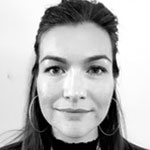Reverse genetics to characterise SARS-CoV-2

Aligned with our mission to advance the understanding and impact of microbiology, the Society reached out to our community of microbiologists to share their experiences in responding to SARS-CoV-2. We aim to showcase the perspective of scientists during the COVID-19 pandemic and the variety of roles adopted to mitigate the global crisis.
This case study is from Dr Maia Kavanagh Williamson, a postdoctoral research associate in Andrew Davidson’s lab at the University of Bristol. As the COVID-19 pandemic emerged, her research pivoted from RNA viruses HIV and dengue to using reverse genetics approaches to characterise basic properties of SARS-CoV-2. Here she details her experience of working throughout the pandemic.
How did you respond to the SARS-CoV-2 during the COVID-19 pandemic?
We first received SARS-CoV-2 in the lab in early 2020 and at the time we were one of the few labs in the country to have the facilities and expertise to allow us to work on it. This was due to the foresight of Professors Andrew Davidson and David Matthews, who recognised the pandemic potential of coronaviruses many years before and had already established facilities for MERS-CoV research at Biosafety Level 3 (BSL-3) at the University of Bristol.
Given how much knowledge there is about it today, it’s hard to comprehend how little we knew about SARS-CoV-2 at the start of the pandemic. Initially, we worked hard to characterise its basic properties, such as which cell lines were infectable, what viral-induced cytopathic effects looked like and establishing virological assays. Things which, for every other virus I’ve worked on, I took completely for granted.
Over the following 12 months, we worked in a large collaboration with researchers from across the University of Bristol as part of the COVID-19 Emergency Research Group (UNCOVER). This included establishing serological assays to assess immune responses in patients’ sera – work we were able to perform thanks to the fantastic biobank at the University of Bristol. Due to generous funding from our Development and Alumni Office (DARO) we were also able to invest in imaging capabilities to establish a high through-put system for live SARS-CoV-2 analysis. We use this platform extensively for COVID-19 research efforts including antiviral screening. We were fortunate to receive FDA (US) and UK Research and Innovation (UKRI) funding to develop a SARS-CoV-2 reverse genetics platform and use it to produce viruses expressing fluorescent reporter genes. Our capacity to produce such viruses nicely complements our ability to live image virus-infected cells.
Over the past 12 months we have worked as part of the UKRI-funded genotype-to-phenotype (G2P) consortium. In this role we use our reverse genetics platform to generate synthetic copies of the virus carrying specific mutations. We then use these to assess the effect of genetic variation identified in the ‘variants of concern’ on viral characteristics such as the viral transcript profile, growth kinetics and the host cell response.
A lot has been written about the amazing work that scientists have done over the past two years on the SARS-CoV-2 virus, in much more eloquent words that I could muster above. However, far less is written of the personal accounts of SARS-CoV-2 researchers over this time, so I wanted to also reflect upon this below.
What were some of the challenges that you faced during this time?
Prior to the pandemic, my research had focused on a niche aspect of dengue virus. It was, as much of academic research is, a pretty lonely pursuit. The COVID-19 pandemic marked a change in the way many of us conduct our research, suddenly working closely in large multi-disciplinary teams towards a common goal. It felt as close to a ‘war-time spirit’ as I could imagine; walking through abandoned labs to borrow regents for experiments you’d never even heard of before. Cycling into the lab in the mornings in lockdown was like transiting a ghost city. I would be consumed by planning that day’s experiments, an impossibly long series of tasks that would see me working late into the evening. Weekends didn’t really exist anymore, except as more time for lab work or a much-needed chance to catch up on sleep.
Whilst the work was and continues to be incredibly interesting, it could also be stressful and overwhelming. Knowing the significance of the work, with such slim margins for error and so many people depending on you can be heavy burden. At times the enormity of the task felt too much, the workload had little let up and, like everyone, we were navigating the difficulties of lockdown and isolation from friends and family. At these times I was more grateful than ever for the companionship and camaraderie of my colleagues.
What can we learn about the importance of microbiology from the COVID-19 pandemic?
I caught myself on a few occasions in those early days sitting in the high containment lab with a vial of SARS-CoV-2 thawing in my (heavily gloved) hand, trying to comprehend that the same virus that was in this tube was causing such havoc around the globe. It’s a humbling experience to possess the skills and expertise to work on a virus that is so relevant, knowing that my research would really help people. As ‘basic’ researchers we don’t often get that feeling, as we are so far removed from the clinical environment.
I am incredibly proud of the work that we have accomplished over the past 2 years, both as an individual and as part of the wider microbiology community. I think it beautifully demonstrates the enormous importance of our scientific community and of the continued funding of microbiology research.

About the author
Dr Maia Kavanagh Williamson is a postdoctoral research associate in Andrew Davidson’s lab at the University of Bristol. She uses a reverse genetics approach to make synthetic copies of the SARS-CoV-2 virus, enabling the investigation of the effect of variation in the genome on viral replication and fitness. Find out more about her work.
